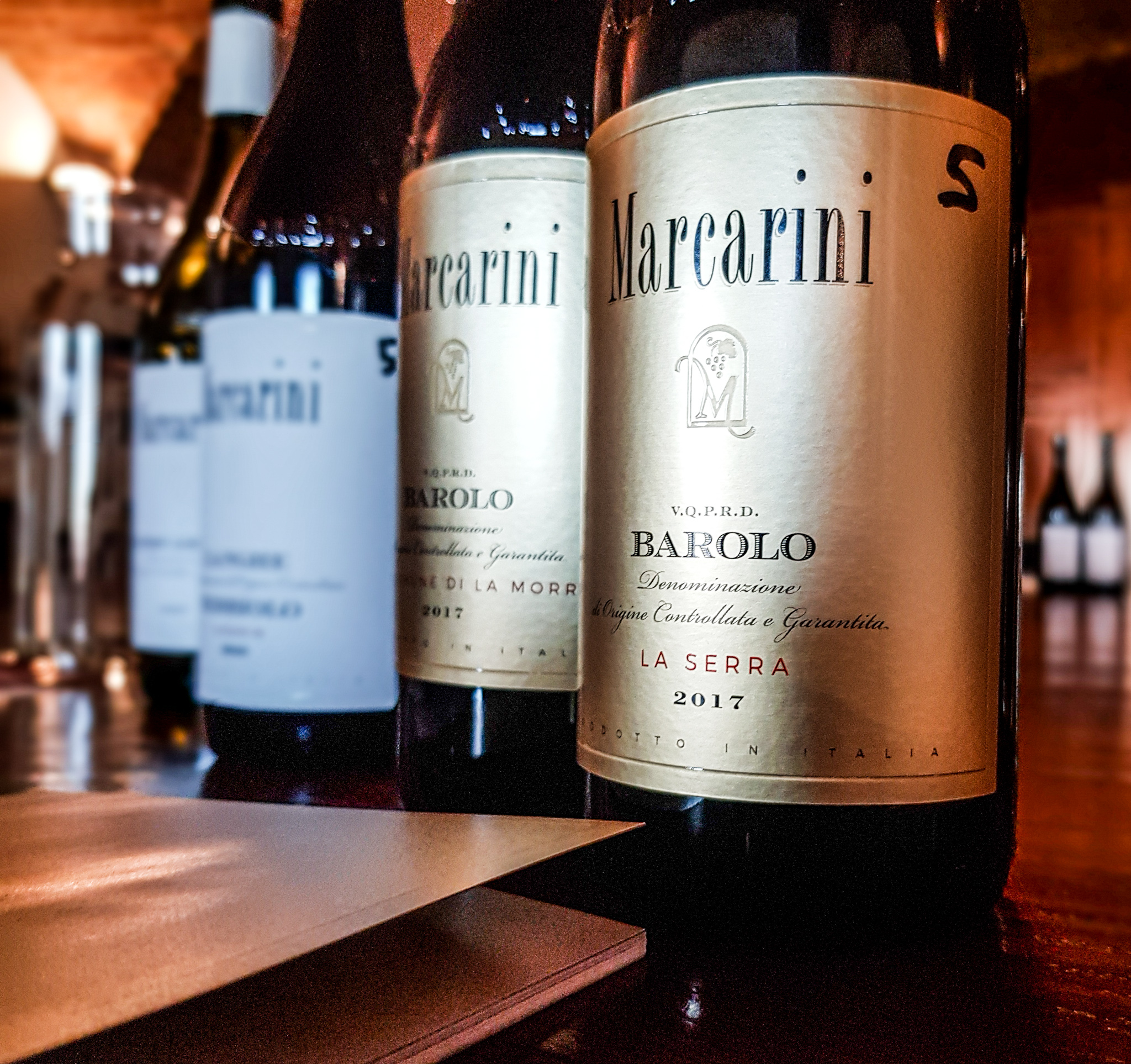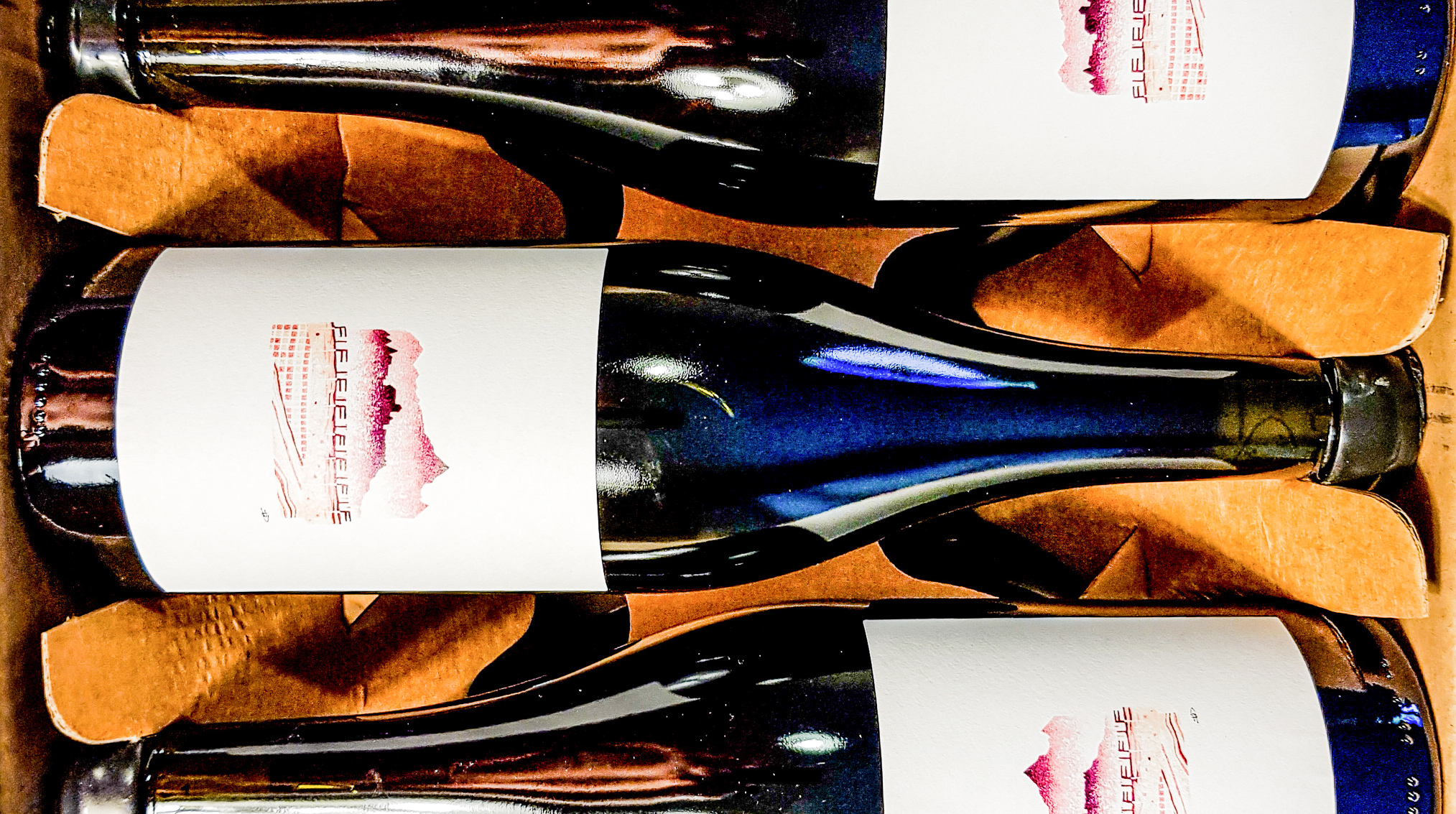Wine
Wines of Piemonte
For many wine drinkers Italian wine means the ubiquitous Chianti and Pinot Grigio, with a cheeky glass of Prosecco every now and again. But Italy has so much more to offer. And nowhere has more to offer than Piemonte. From its food – this is the home of Slow Food and white truffles and the local cuisine has its roots in the French-Italian Savoyard Empire – to its wine, the quality and variety is superb and its “terroir” is as beautiful as anywhere in the world.
The headline wines are Barolo and Barbaresco, dubbed as the “King and Queen of wines”, and they can compete favourably with the very best that the Old World can offer. But Piemonte has so much more… it is the world’s most diverse wine producing region, offering dozens of varieties across its different regions.

Regions & Varieties
The wines in Piemonte are identified by region and/or grape variety. All classifications above Table Wine – labelled Vino Rosso, Vino Bianco or Vino Rosato depending on the colour – have strict rules based upon geography (i.e.: where they are grown and made) and production. The geographical element includes what grape varieties you can use; the production element, what you are allowed to, or have to, do with them once you’ve picked them.
Principal Regions
Langhe – within which are the 2 most highly regarded regions of Barolo and Barbaresco
Roero – predominantly white region, mainly based on the Arneis grape
Monferrato – Barbera’s heartland, but with much more than just that to offer
Asti – Barbera and Moscato thrive here
Gavi – white wine only from Cortese grapes
There are many other regions making good-to-exceptional wines, but in small quantities, which are much less recognisable overseas. They each have their grapes, microclimates, soils and production methods. And they are all worth looking out for – after all you should try anything once, and much more than that if you like it. Some of these are listed below:
Gattinara – In quality terms, it’s important, and was often considered superior to Barolo in centuries past, but in production terms it’s tiny, so it goes here. Based on minimum 90 % Nebbiolo
Ghemme – Minimum 85% Nebbiolo, 34 months ageing, of which at least 18 in wood
Erbaluce di Caluso – Based on the ancient white Erbaluce grape, grown north of Torino
Carema – Minimum 85% Nebbiolo, 2 years’ ageing of which at least 12 months in wood
Ovada – 100% Dolcetto from near the Ligurian border.
Colli Tortonesi – Loads of wines made here, but notable especially for its white Timorasso wines.
Grape Varieties
Nebbiolo – The grape of Piemonte. This black grape is the basis for Barolo, Barbaresco, Roero, Gattinara, Ghemme, Lessona and so on, as well as Nebbiolo d’Alba and Langhe Nebbiolo.
Barbera – The Other grape of Piemonte, if you’re talking about quantity. The most widely-planted grape in the region, grown all over Piemonte, but most associated with the red wines of the Asti and Monferrato regions.
Dolcetto – More of a Langhe wine than an Asti one, the everyday drinker around Alba.
Arneis – Alba’s white grape of choice, historically. Grown mainly north of the river in the Roero.
Cortese – The white grape of Gavi.
Moscato – Responsible for Asti (formerly Asti Spumante) Moscato d’Asti, some dry, still white wines and some dessert wines called Moscato Passito.
Nascetta – Commonly held to be the Langhe’s only native white variety, cultivation is centred around the village of Novello in the Barolo region.
Freisa – Almost certain to be one of Nebbiolo’s parents – and therefore ancient – this is a less polished black grape than Nebbiolo (usually…)
Ruché – Another local rarity enjoying a bit of a comeback. Very perfumed black grape giving interesting and potentially excellent wines.
Pelaverga – A local of Verduno in the Barolo region, this is a black grape giving pink wines.
Again, there are others still, incuding Grignolino, Rossese Bianco, Erbaluce, Timorasso, Chardonnay and Riesling.
Wines
In Piemonte, as elsewhere, the classification system – not only in terms of quality (from a perceived or legal perspective) – revolves around where the wine is grown, with the regulations stemming from that. All manner of stipulations are made based on the traditional practices of the region.
BAROLO & BARBARESCO
These are made from 100% Nebbiolo. The 2 regions are close – about 10 miles (16km) apart, separated by the town of Alba. Vines should be grown on south-facing slopes (with some caveats) between 150m and 450m above sea level. Once the wines are made, they must be aged for a minimum period: 38 months for Barolo, of which at least 18 must be in wood; 26 months for Barbaresco, of which at least 9 must be in wood.
ROERO
If it just says Roero on the label, it’s red made from Nebbiolo, though the production rules are not quite clear whether that’s 100% or 95% minimum.
If it says Roero Arneis, then it’s a white made from 100% Arneis grapes.
BARBERA
Grape used in many regions – it is Piemonte’s most widely-planted variety.
Given its ubiquity in Piemonte, I’m not going to write every rule here. Suffice to say that this wine can be anything from a ‘novello’ style, fresh and fruity, released in November after the harvest, to a ‘Superiore’, which has spent at least 6 months in oak. A lot of Barbera in the Asti and Monferrato areas used to be frizzante – frothy – but that style is dying out now.
DOLCETTO
Grape used in many regions.
The Langhe’s everyday drinking wine, on the table all day, more or less – though that is also dying out now, given that we no longer really drink wine either because the water is not healthy, or because we need the calories. Diano, Dogliani and Ovada have their own DOCG’s for 100% Dolcetto wines (but beware, Dolcetto d’Ovada is a DOC, while Dolcetto d’Ovada Superiore – or simply Ovada – is a DOCG. Keep it simple for the consumer…).
GAVI
Probably Piemonte’s best-known white wine. Made down near Ovada on the Ligurian border from 100% Cortese grapes. They do good Champagne-style wines, too.
ASTI & MOSCATO D’ASTI
Asti DOCG is made from 100% Moscato Bianco grapes and is usually to be found with around 7-8% alcohol, notable sweetness and the fizz of Champagne, though not the quality (and I’ll stick by that). They recently introduced an Asti Secco, with around 12% alcohol and no sweetner. Moscato d’Asti is 100% Moscato d’Asti, with lower alcohol – 5.5% is the maximum – and lower pressure (2.5 atmospheres). Get a good one from a smaller producer and they’re great, with a zip of acidity to balance that sugar (like those classic German Rieslings).
Byrne Vini
Wine has fascinated me ever since my epiphanic moment at university more than 25 years ago. Abandoning the world of design, I worked in wine shops, tasting anything and everything that I could. But I became restless to see it being made. I wanted to get my hands dirty and feel the grapes under my feet.
So I worked a harvest in Australia. And moved on to a fine wine shop in Melbourne, followed by time in a Tasmanian cellar door. Then I went to Italy to work a harvest, just to experience it in Europe: the plan was to go to Argentina the following (European) spring to do a harvest there. That Italian harvest was in Piemonte, and it was 2001. I never did get to Argentina…
There are so many grapes and regions just in Piemonte. The greatest strength of the region – like the rest of Italy, and with their foods, not only the wines – is the cleaving to traditions. We enjoy the fabulous regional dishes of the country because they have been refined and refined over centuries, until they are made ‘just so’. If you want to make classic Genovese pesto, you do it in a very particular way. No ifs, no buts. No straying from the one true path.
But there are buts…The production of traditional food and, even more so, wine, has gradually been codified in law in Italy as elsewhere in Europe. For wines, this has been based on geographical regions and has prescribed – and, equally importantly, proscribed – all manner of things, such as grape varieties, location of vineyards, production methods, ageing requirements and so on. Traditions have been taken as the basis for the legislation, bringing into law the common practices of the area.
In Piemonte, for example, the common practice was to make single-variety wines, even though most places grew more than 1 variety and often several. The result has been that wines which are a blend of different varieties have not really caught on here in the way they have in other places.
But – you see? There’s one – this does not mean that those wines are not worth making. In the same way that making your ragù or ravioli to a precise recipe means innovation is stifled, making only those wines that your parents and their parents made has the same effect.
It could be that blending 10 different varieties together, or ageing in a solera system would make wonderful wines here. But no one knows because no one does it. And no one does it not because it was tried and rejected, but because no one did it before. You don’t innovate.
So my own personal take and adventure is to try these things. Hence Byrne Vini.
Contact me at evan@byrnevini.com to find out more.
